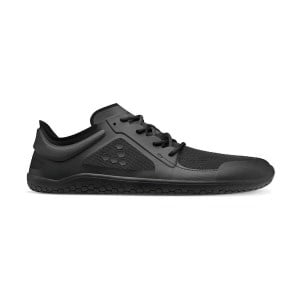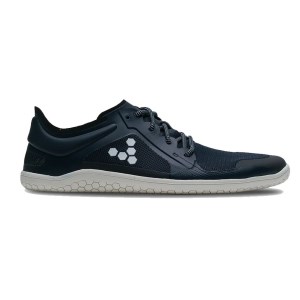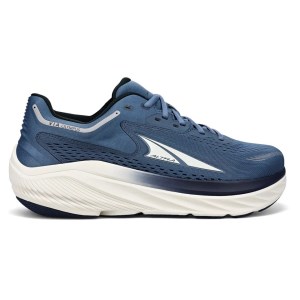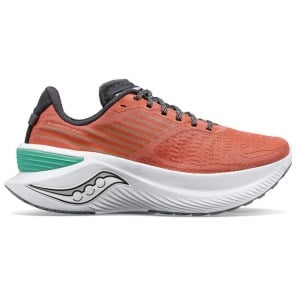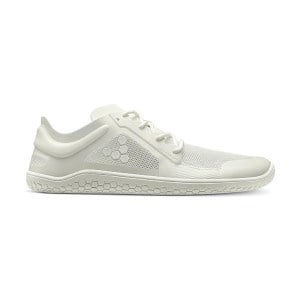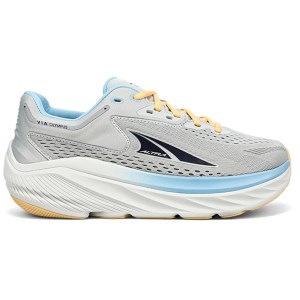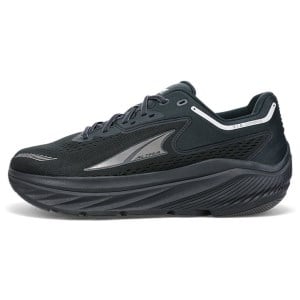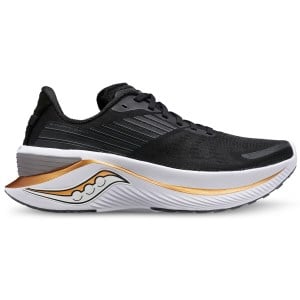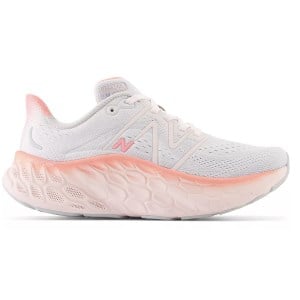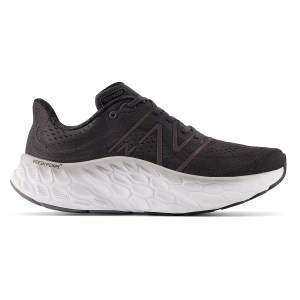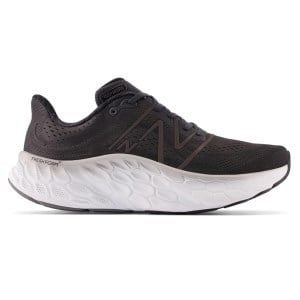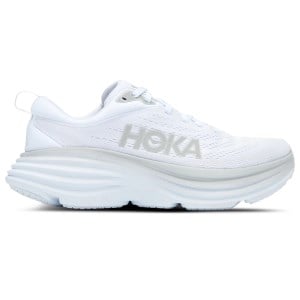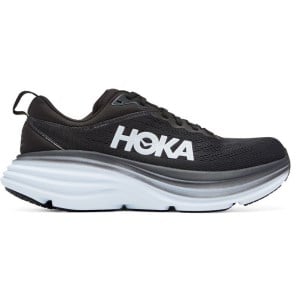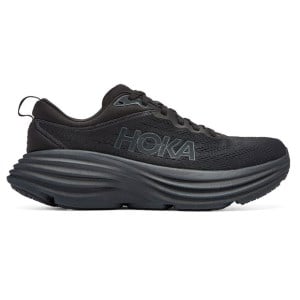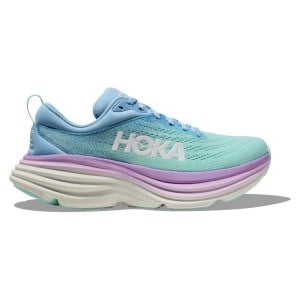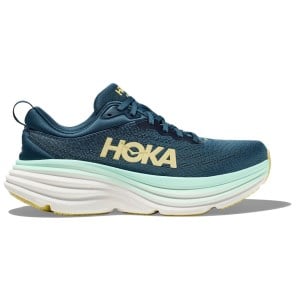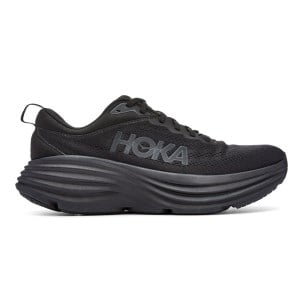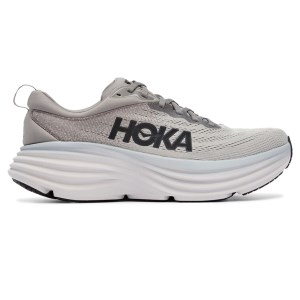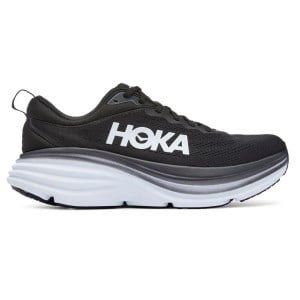Everything You Need To Know About 0-4mm Drop Running Shoes
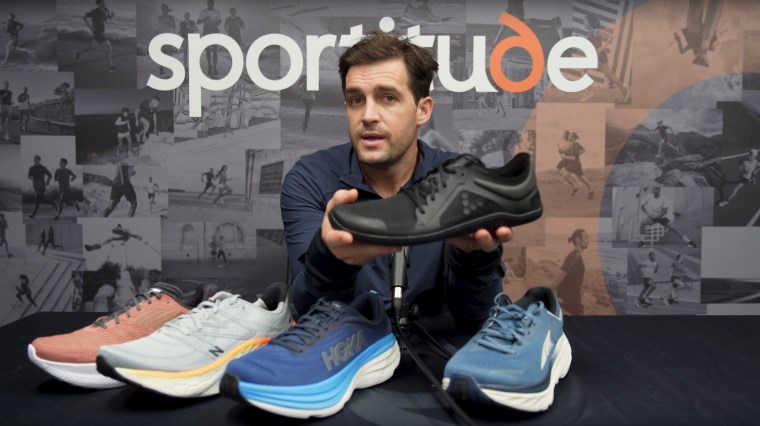
The heel-to-toe drop of your running shoes can have a powerful effect on your comfort, your running biomechanics and the distribution of impact forces acting on your feet, ankles, calves, knees, hamstrings and hips.
In this series, Sportitude Running shoe expert Josh discusses the different ranges of heel-to-toe drop available in the running shoe market, starting with 0-4mm drop shoes.
From first glance, you may believe this category refers solely to barefoot and minimalist running shoes. However, the heel-to-drop is not the only factor that influences the feel or cushioning beneath your feet, with stack height - the height or thickness of the material between your feet and the ground - also playing a key part. This means a minimalist drop running shoe doesn't necessarily mean minimal cushioning.
To explain the differences between running shoes within the zero drop category, Josh compares a true barefoot shoe family, the Vivobarefoot Primus with the Altra Via Olympus, a zero drop shoe on a 33mm platform.
He then dives into running shoes with a 4mm heel-to-toe drop, being the Saucony Endorphin Shift 3, New Balance Fresh Foam More v4 and the Hoka Bondi 8.
He discusses how their rocker sole engineering works in harmony with the low heel-to-toe drop to minimise stress to your forefoot while offering a natural-feeling slope within the running shoe. However, a little bit of stress is not always a bad thing - potentially allowing your feet to adapt to become more biomechanically strong, resilient and efficient.
Josh also explains why the Altra Via Olympus is an ideal option for transitioning to zero drop running shoes, and touches on the science behind how 0-4mm drop shoes affect the impact and braking forces acting on your body.
This insightful look into this category will help determine whether 0-4mm drop running shoes will cater smoothly to you as a runner, and also addresses their suitability for heel strikers, midfoot strikers and forefoot strikers.
Check out the video with full transcript below.
Hey guys, Josh here from Sportitude Running. We're going to take a deep dive look into stack heights and heel-to-toe drops that play between 0mm and 4mm. We've done a video on how brands measure the stack height and the heel-to-toe drop in running shoes for more information.
In front of me we have a selection of running shoes. In today's conversation we're going to talk about the heel-to-toe offsets and their stack heights to give you context around why they are important in this marketplace.
We’ll also give you some understanding of how we would profile runners to even consider this category in the first place. Without further ado let's get stuck in.
Zero Drop Running Shoes
Vivobarefoot Primus Running Shoes
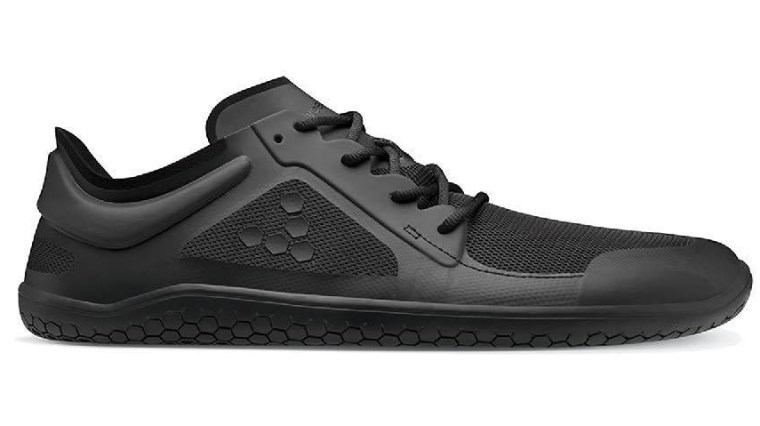
Let's talk about who should be considering this category of running shoes. We have models from the zero drop shoe category and 4mm heel-to-toe offset category to discuss today.
To give you some context and understanding around a zero drop shoe, traditionally speaking someone who's going to run in a shoe like the Vivobarefoot Primus (Vivobarefoot Primus Lite 3.0 shown above) is going to be able to tolerate quite a lot of load through the body.
There's no heel-to-toe offset, you just get a piece of a very simple rubber between the base of your foot and the ground. There’s no support whatsoever, so realistically this is basically a glorified protection piece for the sole of your foot.
This is for someone who is mechanically pretty strong with strong calves, ITB, glutes, hamstrings, quads, very strong feet and no plantar fascia issues. They're really looking to strengthen their lower limbs from the hip down. For that type of runner we can have a conversation around this specific shoe.
If you go from a traditional 8mm offset then put yourself into this zero drop shoe, I guarantee after 200m you're going to feel your calves working overtime. It is not for everyone. Someone who's going to be considering this barefoot running shoe is strong mechanically from the hips down with no injuries, no soreness and no concerns.
-
Vivobarefoot Primus Lite 3.0 - Womens Running Shoes
-
Vivobarefoot Primus Lite 3.0 - Mens Running Shoes
-
Vivobarefoot Primus Lite 3.0 - Mens Running Shoes
Altra Via Olympus Running Shoes
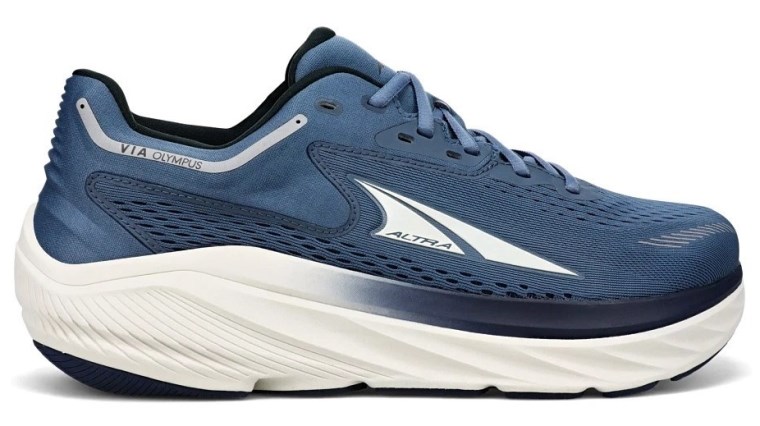
The other zero drop running shoe is the Altra Via Olympus which features a 33mm heel height and 33mm forefoot height. There’s quite a bit of difference between what's offered compared to the Vivobarefoot Primus, however the heel-to-toe offset is the same, being 0mm.
There is quite a variance between these two zero drop running shoes. The Altra Via Olympus running shoes are for someone wanting to potentially progress through to a lower profile like the Vivobarefoot Primus family, however needs a little bit more support and cushioning.
There’s not a lot of a rocker through the forefoot because it’s more of a stable base shoe. However, a runner looking at an Altra Via Olympus still expects a bit from the midsole. They still want protection from cushioning, but is also wanting to load up their lower limbic calf, soleus and plantar fascia as they transition through their gait cycle.
They’re progressing towards a zero profile shoe. Having a little bit of load going up their lower limb is A-OK, but not to the point where they want to put their body under too much stress.
4mm Drop Running Shoes
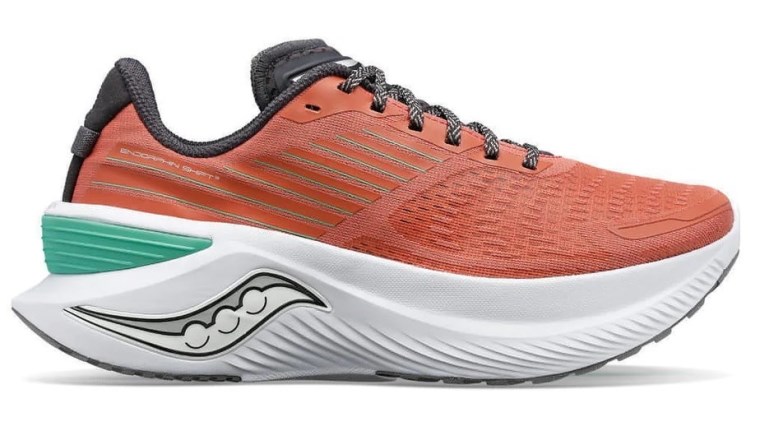
Who do we put into these different heel-to-toe drops? When we're looking at the Saucony Endorphin Shift 3 (above), New Balance Fresh Foam More v4 and the Hoka Bondi 8, they all have one very consistent theme - a really aggressive rocker through the forefoot.
Brands are trying to take load off the front half of the foot, being the metatarsal heads in the forefoot. As you transition through your whole gait cycle, they take a little bit of load off by having a nice, smooth rocker feel through the forefoot.
All three of these running shoes, while on the same heel-to-toe offset of 4mm, do run significantly differently. It's really important to know that from the get-go. By taking load off the forefoot, that actually takes a fair bit of load and stress off your plantar fascia. It therefore takes a bit of load off the lower Achilles and calf muscle for the majority of runners who are using this specific type of running shoe.
They're great shoes for mileage running and easy kilometres out on the road, taking a bit of stress off your foot by having that nice release through that rocker in the front half of the running shoe.
Transitioning To A Zero Drop Shoe: Altra Via Olympus
While the profile of the Altra Via Olympus doesn't look too dissimilar to the 4mm drop shoes, it’s actually zero drop with 33mm heel height and 33mm forefoot height. Why would we have a conversation about this as a starting point?
It could be that someone is wanting to transition out of the 4mm drop category of rocker shoes. It's important to know you can actually do too much training in rocker shoes. We don't want to take too much load off the foot. We want to put an element of stress and an element of training through the lower limbs so we're not so reliant on rocker shoes or carbon plated shoes for example.
Having a running shoe like the Altra Via Olympus in our offering is fantastic because it gives us a great segue for someone to come from a 4mm drop running shoe. It offers some cushioning and not an overly aggressive rocker through the forefoot. From there a runner can progress to potentially the zero drop Vivobarefoot Primus family. It’s a really aggressive take on the minimalist category of running shoes.
By having some protection in the heel and forefoot, the Altra Via Olympus allows the runner to manipulate where they land in this running shoe and still get some cushioning.
Running in the Vivobarefoot Primus, you're going to be right up on your toes, midfoot to forefoot running. When you're landing midfoot to forefoot, a lot more stress and load goes through the calf muscle. A lot more reliance is on the strength of your soleus to stabilise your calf on the X-axis and Y-axis. Also, the plantar fascia and Achilles can work overtime.
Therefore, the Altra Via Olympus is a great in-between option that we classify as a traditional minimalist shoe.
How Do 0-4mm Drop Running Shoes Affect Impact & Braking Forces?
In reference to the heel-to-toe offsets and the entry point, you can run landing on midfoot or forefoot first in the 4mm drop shoes. However, the vast majority of the runners who end up in these running shoes are heel strikers and midfoot strikers.
At the cushioning point at the back of the running shoe, we'll probably find the impact to be marginally higher than what we would find in the deceleration point, being the braking force through midstance.
The variance between impact and braking is a vitally important conversation when we're looking at 0mm–4mm drop shoes, because your entry point on the heel is going to be higher than what we would find if your entry point is on your forefoot.
When wearing a running shoe like the Vivobarefoot Primus while landing on your forefoot, you can have very low impact Gs (g-force) because the shock is taken through your major muscle groups being your quads, glutes, hamstrings and calf muscles that will take that vertical force.
That force has to go somewhere, and it's usually in the horizontal phase which is the braking point of your gait cycle. Therefore, the increase in braking Gs is significantly higher when you're landing on your toes which is exactly what you need to do in the Vivobarefoot Primus versus landing on your heel in a 4mm heel-to-toe offset rocker shoe like the Saucony Endorphin Shift 3, New Balance Fresh Foam More v4 and the Hoka Bondi 8.
The Wrap Up
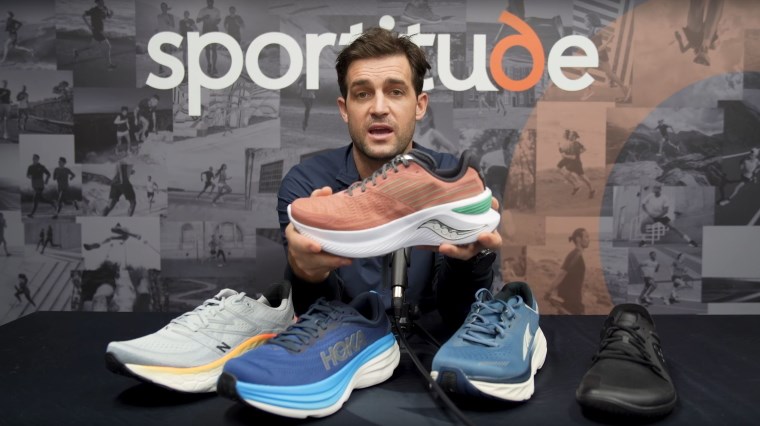
Thank you for tuning in to our conversation with reference to 0mm to 4mm heel-to-toe drops. If you’d like to know more about other categories, we are doing a 5mm-9mm drop and also a 10mm+ drop blog and video in the coming days, so stay tuned.
Please subscribe to the Sportitude YouTube channel, if you haven't already done so to stay notified and we'll keep knocking out shoe reviews or category reviews - whatever you need and whatever is going to make you a better runner.
We'll continue to do these videos for you the running community all over the world. Stay safe, be kind to one another, happy running and we'll see you on the road. Take care.
For a more in-depth shoe fitting experience, you can book a free 15 minute video chat in a Live Fit session or make an appointment to discover your RunDNA at Sportitude Running@Hindmarsh.
Follow Sportitude Running at:
Instagram: sportitude.running
If you liked this, you'll love:
Everything You Need To Know About 5-9mm Drop Running Shoes
Everything You Need To Know About 10mm+ Drop Running Shoes
A Runner's Guide: What Is Shoe Drop & Stack Height?
What Type Of Running Shoe Is Best For Me?
-
Vivobarefoot Primus Lite 3.0 - Womens Running Shoes
-
Vivobarefoot Primus Lite 3.0 - Womens Running Shoes
-
Hoka Bondi 8 - Womens Running Shoes
-
Hoka Bondi 8 - Womens Running Shoes
-
Hoka Bondi 8 - Womens Running Shoes
-
Hoka Bondi 8 - Mens Running Shoes
-
Hoka Bondi 8 - Mens Running Shoes
-
Hoka Bondi 8 - Mens Running Shoes

